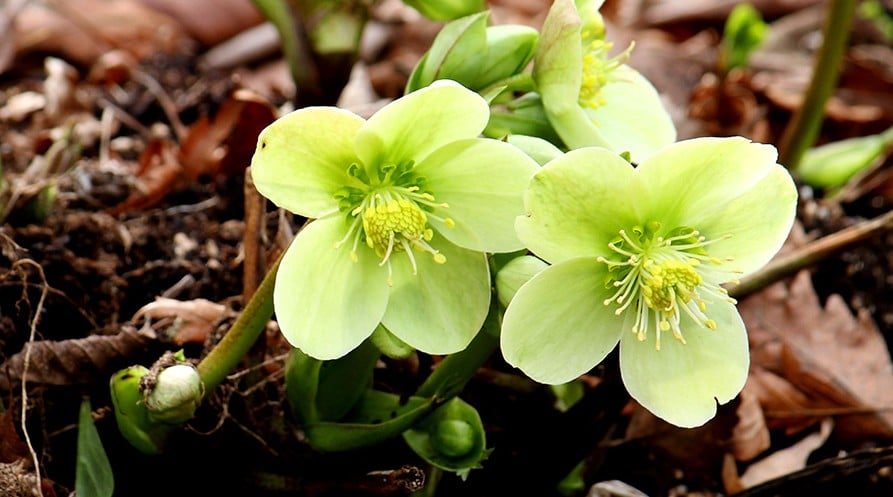
In these last few days of garden activity, I usually take some time to clean up the hellebore bed. I remove the leaves in late fall, because snow ruins them over winter, and I don’t want to see the lovely spring blossoms rise amid dead foliage. Often, I find a healthy army of hellebore seedlings under the skirts of several plants.
The seeds fall from the plants’ seed cases in midsummer, and take root around the base of the mother plants. The young seedlings I find in autumn are only eight weeks old, yet they appear vigorous and strong. But with just a simple embryonic radicle root at this point, it’s better to let them remain where they are for winter. They’ll begin growing again in spring, and by midsummer next year, they can be moved into other garden areas. Each mother plant produces quite a few closely clustered seedlings, and this is a good way to develop patches of hellebores all over the garden. Hellebores grown from seed usually flower in their third or fourth year.
Seedlings of species plants like purple Helleborus atrorubens and white H. niger produces lots of seedlings that are identical to the parent. H. orientalis is more varied, and may produce seedlings that are combinations of pink and green, with or without a scattering of speckles. But whatever seedlings I get, they’re all a delight when they finally begin blooming. Hellebores are good groundcover plants and their handsome foliage looks fine all summer. All these plants require is a two-inch (5-cm) mulch with shredded leaves in autumn, and a generous scattering of composted manure in spring. Providing regular irrigation increases the number of flower buds produced.








